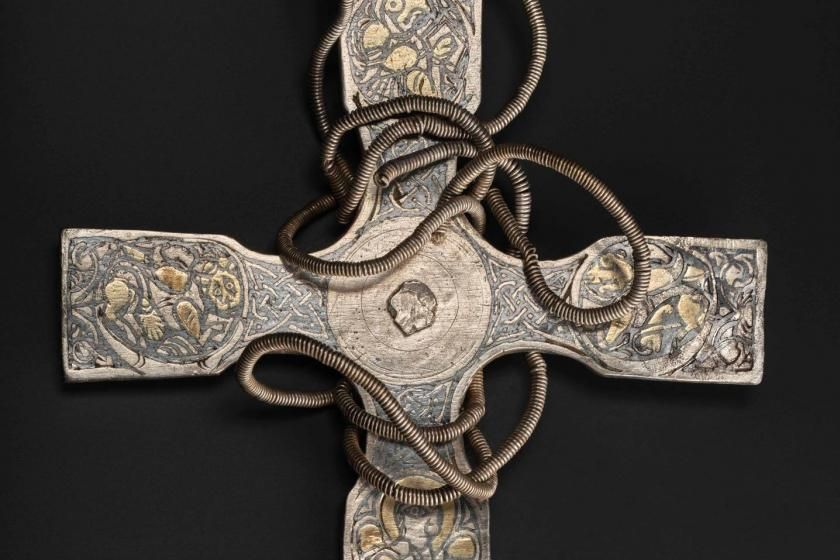
www.yahoo.com
After careful conservation, museum reveals 'spectacular' 1,000-year-old cross
A person using a metal detector in a Scottish field discovered a massive collection of rare and one-of-a-kind objects from the Viking age, and after years of careful conservation, these treasures — including an Anglo-Saxon silver cross — are dazzling historians.The Galloway Hoard was unearthed in 2014, and is considered the richest collection of Viking-age items ever found in Britain or Ireland. It was buried in the late 9th century, and contains more than 100 silver, gold, and bejeweled objects as well as Scotland's earliest examples of silk. The Anglo-Saxon cross stands out, due to its intricate design and intact, heavy chain.The person who commissioned the cross was from an aristocratic family and could have been a king, historians say.
Culture & Entertainment
A person using a metal detector in a Scottish field discovered a massive collection of rare and one-of-a-kind objects from the Viking age, and after years of careful conservation, these treasures — including an Anglo-Saxon silver cross — are dazzling historians.
The Galloway Hoard was unearthed in 2014, and is considered the richest collection of Viking-age items ever found in Britain or Ireland. It was buried in the late 9th century, and contains more than 100 silver, gold, and bejeweled objects as well as Scotland's earliest examples of silk. The Anglo-Saxon cross stands out, due to its intricate design and intact, heavy chain.
The person who commissioned the cross was from an aristocratic family and could have been a king, historians say. Dr. Martin Goldberg, the principal curator of early medieval and Viking collections at National Museums Scotland, told The Observer the item is "just spectacular. There really isn't a parallel." It's astounding that it survived the era of Viking raids, and the "quality of the workmanship is just incredible," Goldberg said. "It's a real privilege to see this after 1,000 years."
National Museums Scotland acquired the hoard in 2017, and didn't rush the cleaning of the cross — a porcupine quill that had been carved into a tool was used on it, removing dirt without damaging the metal. It's not clear why the items were buried, and researchers said they expect to spend years searching for answers.
























































